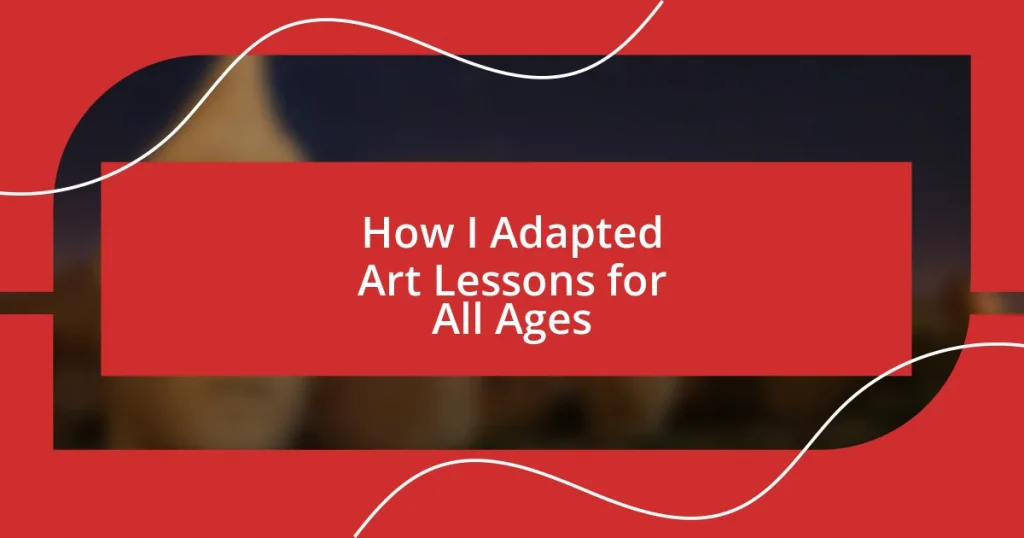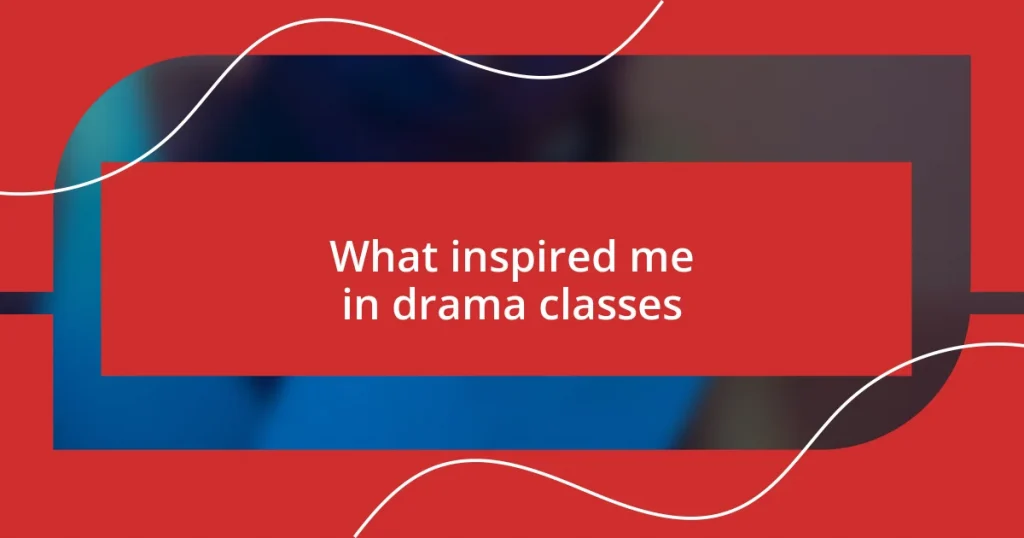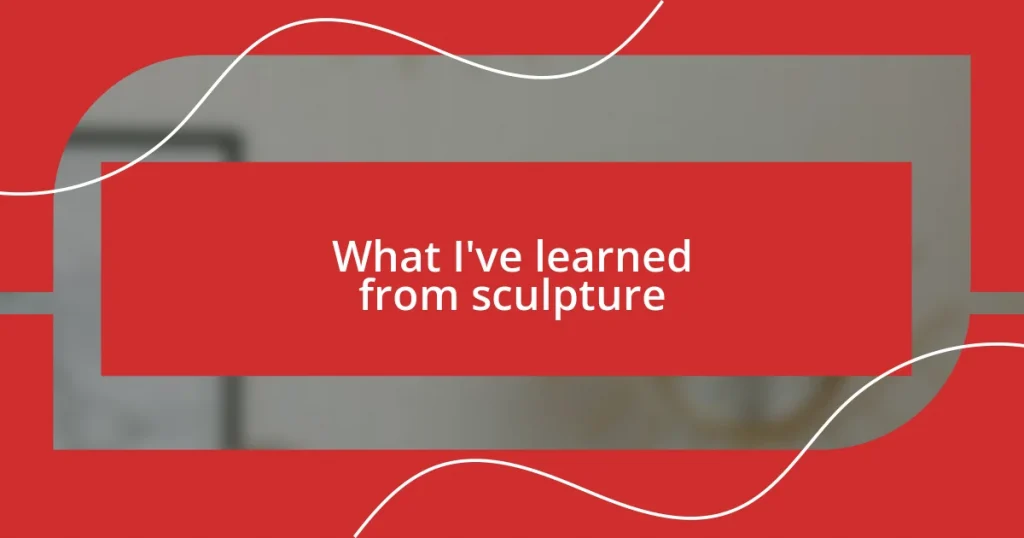Key takeaways:
- Understanding diverse learning needs enables educators to adapt art lessons that resonate with various age groups, fostering creativity and inclusivity.
- Choosing appropriate art materials based on students’ age and skill levels significantly impacts their engagement and ability to express themselves creatively.
- Creating a safe and accepting environment encourages individual expression, allowing students to explore their unique artistic voices and share personal stories.

Understanding Diverse Learning Needs
Understanding diverse learning needs is crucial for creating effective art lessons. I remember the first time I taught a class with students ranging from preschoolers to seniors. It was stunning to see how each age group approached the same project differently; the younger ones unleashed their creativity with wild strokes, while the older students opted for meticulous detailing. How can we, as educators, harness this incredible variety to foster an inclusive environment?
It’s essential to recognize that students learn differently based on their age, background, and personal experiences. For instance, one student in my class struggled with verbal communication but displayed an extraordinary talent for visual storytelling through art. This experience opened my eyes to the importance of adapting my teaching strategies. Are we doing enough to support these unique expressions of understanding in our lesson plans?
I often find myself reflecting on how creativity can bridge gaps in learning preferences. When I introduced mixed media, I noticed students experimenting in ways I hadn’t anticipated, blending techniques and materials. It made me realize how essential it is to provide various avenues for expression. What if we encouraged our students to explore art not just to convey their ideas, but as a means of connecting with their peers and the world around them?

Choosing Appropriate Art Materials
When it comes to selecting appropriate art materials, I emphasize the importance of considering the age and skill level of my students. In one memorable class, I introduced clay to preschoolers, expecting pure joy but underestimated their fine motor skills. Instead of creating, they ultimately became frustrated. This taught me that not all materials are suited for every age group, and sometimes, it’s the simpler options that yield the most delight and creativity.
Here are some tips I keep in mind when choosing materials:
- Know the Age: Tailor materials to match developmental stages, such as washable markers for young children and acrylic paints for older students.
- Safety First: Always check for non-toxic and age-appropriate labels to avoid any hazards.
- Variety Adds Value: Introduce a mix of traditional and non-traditional materials, like recycled objects, to inspire creative thinking.
- Student Interest: Engage students by asking about their preferred mediums, allowing for more personal investment in their art.
In every session, I discover that the right materials can spark enthusiasm and action, guiding my students toward joyful expression. Adapting to their needs—it’s a necessity, not just an option.
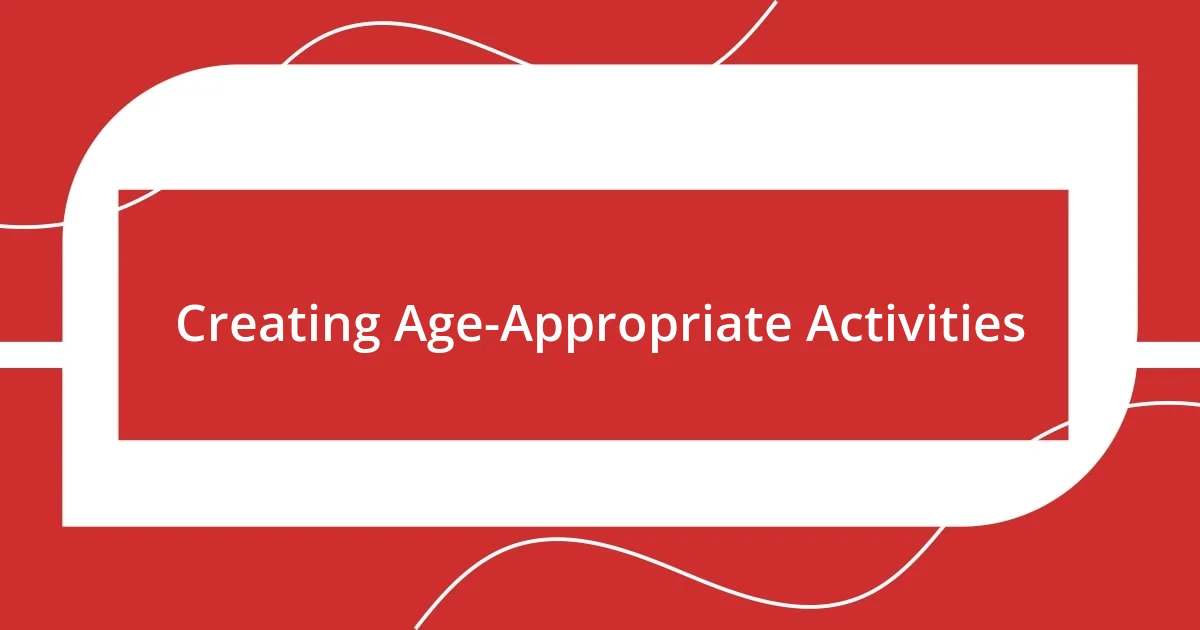
Creating Age-Appropriate Activities
Creating age-appropriate activities involves tailoring experiences that resonate with each developmental stage. I recall a day in my class when I decided to have an interactive collage project. For my toddlers, I provided pre-cut shapes and stickers, allowing their little hands to explore without feeling overwhelmed. Meanwhile, my teens received a broader array of materials, encouraging them to express more abstract ideas. Witnessing this difference made me realize how important it is to adjust complexity to match age while still challenging their creativity.
Another aspect that often comes to mind is the emotional engagement that age-appropriate activities can foster. When I introduced watercolor painting to a group of elementary school kids, I noticed the joy on their faces as colors blended and bloomed on paper. In contrast, older students found excitement in creating detailed cityscapes with that same medium. Those moments reinforced my belief that art can evoke powerful feelings, and age-appropriate tasks unlock students’ potential to connect with art on a deeper level.
It’s not just about matching complexity; it’s also about the themes we choose. I remember introducing the concept of identity through self-portraits. I tailored the lessons so that preschoolers focused on shapes and colors, while older students explored their ideas of self through symbols and mixed media. This inclusive approach sparked meaningful dialogues among students of different ages, reminding me of the importance of creating spaces where everyone can express themselves.
| Age Group | Activity Examples |
|---|---|
| Toddlers | Collage with pre-cut shapes and stickers |
| Elementary School | Watercolor flowers and animal art |
| Teens | Mixed-media self-portraits and abstract cityscapes |
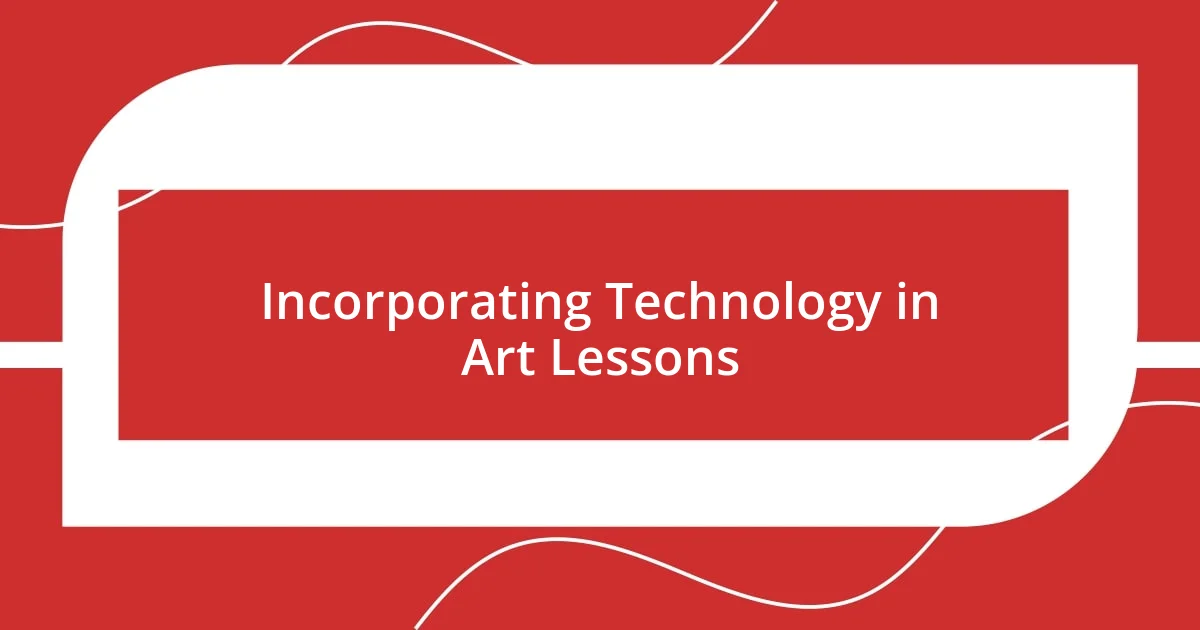
Incorporating Technology in Art Lessons
In today’s art classrooms, technology can be a transformative tool. I remember the first time I introduced digital drawing tablets to my students; there was an undeniable excitement in the air. The ability to create art digitally opened a pathway for creativity that traditional materials simply couldn’t match. Students, especially teens, responded with a burst of enthusiasm, using software to layer colors and manipulate images in ways I never imagined.
Incorporating tools like online collage makers has also impressed me. I once had a mixed-age class where younger students worked with physical materials while their older peers created digital collages. The collaboration was inspiring! I couldn’t help but marvel at how the older students mentored the younger ones, showing them how to incorporate technology while also respecting the traditional methods. Seeing this transfer of knowledge, I wondered—what would happen if we merged these different artistic approaches more frequently?
I’ve found that using virtual galleries to showcase student artwork can foster a sense of belonging and pride. After hosting an online exhibit of their work, the looks of joy and accomplishment on their faces were priceless. It was a reminder that regardless of age, the joy of sharing art with others elevates the experience. In my opinion, embracing technology in art lessons is not just about modernizing the curriculum; it’s about enriching the creative journey for every student.

Encouraging Individual Expression in Students
When encouraging individual expression in students, creating a safe and accepting environment is vital. I once had a student who was particularly shy about sharing her work. During a class critique, I introduced the idea of “silent admiration” where we would take a moment to appreciate each piece without judgment. Her eyes lit up the first time she heard peers express admiration for her art. This moment taught me how important it is to foster a space where every student feels valued and confident in their unique voice.
Another effective strategy is to allow room for choice. During one art class, I set up various stations with different mediums and themes. Students could freely choose what resonated with them, and I watched in awe as one boy, who typically avoided the spotlight, created a vibrant spray paint mural. His excitement was contagious! Questions like, “What materials speak to you today?” or “How do you want to express your emotions?” can guide students toward finding their personal inspiration.
Additionally, sharing my own artistic journey often ignites their creativity. I remember discussing my struggles with a painting that just wouldn’t come together, emphasizing that art is about the process, not just the outcome. This transparency paved the way for students to share their challenges, creating a sense of unity. Have you ever noticed how powerful it can be when we open up about our experiences? It encourages students to embrace their personal stories and showcase their individuality in a way that resonates with them.

Assessing Progress and Engagement
Assessing progress and engagement in art lessons can be as inspiring as the creative process itself. I remember one project where I had students journal their experiences alongside their artwork. This not only allowed me to gauge their emotional attachment to their creations but also revealed the thought processes behind their choices. Isn’t it fascinating how documenting feelings can enhance understanding and spark deeper conversations about their art?
I’ve found that the best way to assess engagement is to observe students during the creative process. When I introduced a mural project, I noticed that certain students thrived on collaboration while others preferred solitude. Watching the dynamics unfold, I realized that providing options for both group and individual work allowed each student to engage on their own terms. How often do we underestimate the power of choice in fostering enthusiasm?
Another technique I’ve adopted is peer feedback, which can be incredibly enriching. During a painting session, I facilitated pairs to exchange constructive comments on each other’s work. The transformation was remarkable; students became more invested in their pieces, eager to make improvements and celebrate each other’s strengths. It made me reflect on my own experiences—how often do we benefit from seeing our work through someone else’s eyes? In my practice, encouraging peer interaction has proven to be a vital tool for deepening engagement and fostering a supportive community.

Adapting Lessons for Various Settings
Adapting lessons for different settings requires flexibility and creativity. I’ve taught in diverse environments, from bustling community centers to quiet art studios, and each space presents its own unique challenges and opportunities. For example, in a community center, I discovered that incorporating local themes into projects dramatically increased students’ enthusiasm. Have you ever seen how a simple change in context can completely shift a student’s interest?
One time, I found myself in a park under a large oak tree, conducting an outdoor class. The ambiance inspired a spontaneous nature-themed project where students created art using found objects. It was such a thrill to see them dive into their surroundings, transforming leaves and twigs into creative tools. Engaging with the environment not only sparked their imagination but also created a memorable experience that linked art to the world around them. Wouldn’t you agree that nature often brings out our most innovative ideas?
I also learned the importance of considering accessibility. While volunteering at a senior center, I tailored my lessons to accommodate varying physical abilities. Using larger brushes and thick paper allowed everyone to express themselves without frustration. Watching seniors joyfully experiment with colors while sharing stories from their past made me realize that adaptability in our approach can unlock the creative potential in everyone, regardless of their background or experience. Isn’t it heartwarming to witness such connection through art?










